Winter driving presents a unique set of challenges that require a combination of vehicle capability, driver skill, and appropriate equipment to navigate safely and confidently. Among the most critical elements of winter preparedness is the fitment of winter tires, which dramatically improve traction, handling, and braking performance on snow and ice compared to all-season tires.
However, not all SUVs accommodate winter tires equally well. Differences in wheel well clearance, suspension design, and overall vehicle architecture mean that some SUVs fit winter tires with ease, allowing for larger, more aggressive tread patterns and studded options, while others face significant clearance issues that limit tire size and effectiveness.
For drivers living in regions with harsh winter weather—where snow, ice, and freezing temperatures are the norm—selecting an SUV that supports optimal winter tire fitment is crucial.
The right tire fitment not only enhances safety but also improves confidence behind the wheel, reduces the risk of accidents, and minimizes the chance of becoming stranded in severe conditions.
Unfortunately, vehicle manufacturers often design SUVs with a focus on aesthetics, fuel economy, or on-road performance, sometimes at the expense of off-road or winter capabilities. As a result, some models struggle to fit larger or more specialized winter tires without risking tire rubbing or mechanical interference, which can lead to safety issues or expensive repairs.
This article explores the landscape of SUVs with regard to winter tire fitment, highlighting five models that stand out as the best choices for drivers prioritizing winter readiness and five models that present notable clearance challenges when outfitted with winter tires.
These insights are particularly valuable because winter tires vary significantly in size and design, with some models being bulkier due to deeper tread blocks, aggressive siping, or studs meant to grip ice. A vehicle’s ability to accommodate these tires without modification or compromise often reflects the thoughtfulness of its design for all-season and winter conditions.
The SUVs rated best for winter tire fitment typically share several common traits. They boast generous ground clearance—often 8 inches or more—that helps prevent snow build-up around the tires and protects the undercarriage from damage. Their wheel wells are spacious enough to house wider and taller tires without risking rubbing during suspension travel or steering maneuvers.
Many are equipped with advanced all-wheel-drive or four-wheel-drive systems designed to work harmoniously with winter tires, maximizing traction and control. Beyond mechanical compatibility, these vehicles often include thoughtful winter features such as heated mirrors, heated seats, and traction control modes optimized for snow and ice.
Examples include the Subaru Outback, Toyota Land Cruiser, Jeep Grand Cherokee, Ford Bronco Sport, and Mazda CX-50 Meridian Edition—all of which combine practical design with proven winter performance.
Conversely, SUVs that face clearance issues for winter tire fitment often fall short due to tighter wheel wells, lower ground clearance, or suspension designs that prioritize on-road comfort or fuel efficiency over rugged capability.
This can limit the size and type of winter tires that can be safely installed, forcing owners to choose less effective tires or invest in aftermarket modifications that may impact handling or warranty coverage.
Models like the Hyundai Santa Cruz, Ford Explorer, Chevrolet Traverse, Honda Pilot, and Nissan Pathfinder illustrate these challenges, demonstrating how popular SUVs can sometimes be less than ideal for serious winter conditions despite their other strengths.
Understanding these differences is essential not only for consumers looking to buy or equip an SUV for winter but also for enthusiasts and safety-conscious drivers aiming to maximize their vehicle’s capabilities in adverse weather.
By considering clearance, suspension design, and tire compatibility, drivers can make informed decisions that improve winter safety, extend the lifespan of their tires, and enhance overall driving enjoyment during the coldest months of the year.
The following sections delve deeper into these considerations, providing detailed evaluations of each vehicle and offering practical guidance for selecting SUVs that truly perform when the roads turn icy and snow-covered.
Also Read: Top 10 Most Reliable Used Cars You Can Buy for Under $10,000 in 2025
5 SUVs Rated Best for Winter-Tire Fitment
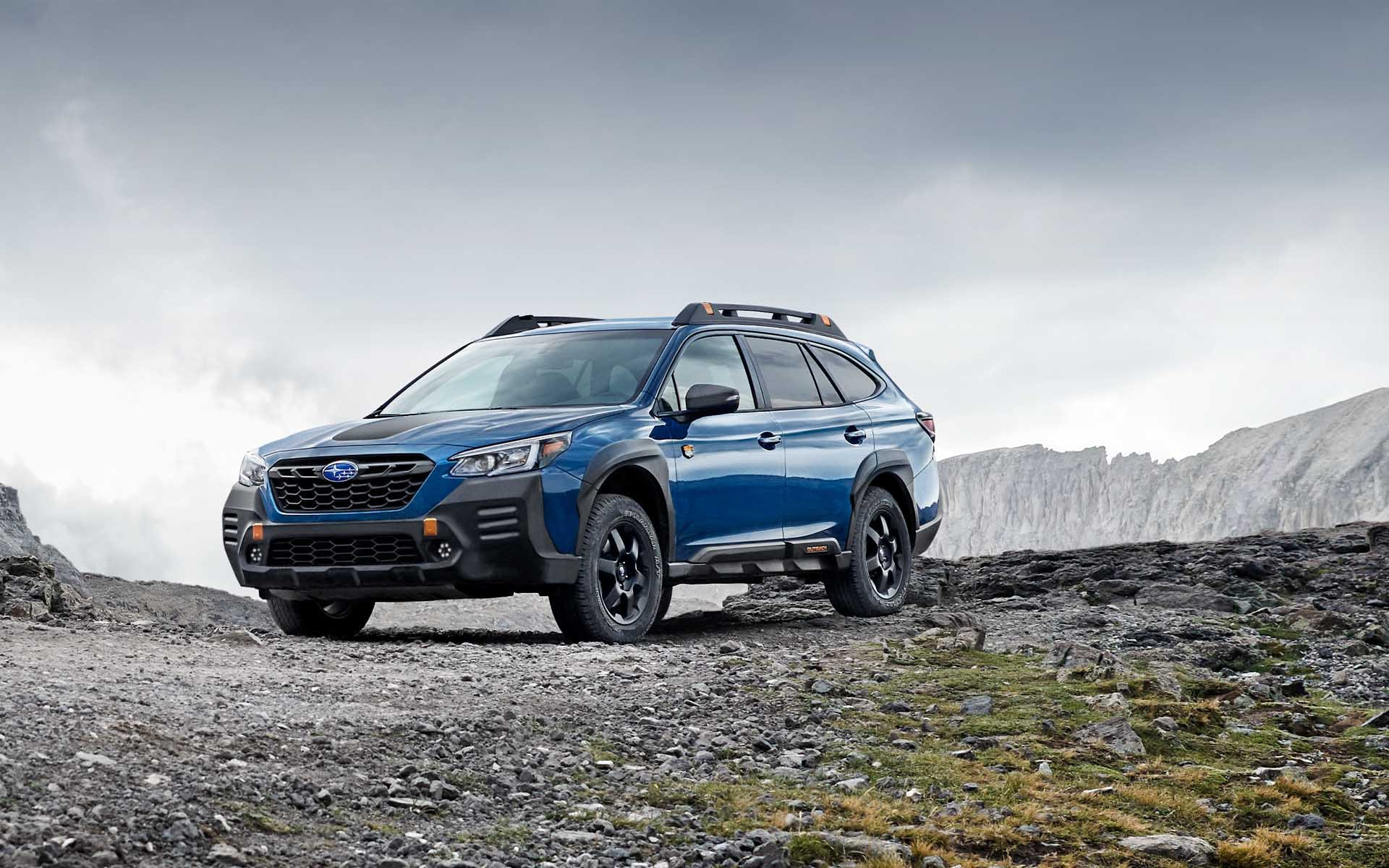
1. Subaru Outback
The Subaru Outback has cemented its reputation as one of the most winter-ready SUVs on the market, combining all-wheel drive capability with excellent ground clearance and a tire-friendly design. At the core of the Outback’s winter prowess is Subaru’s Symmetrical All-Wheel Drive (AWD) system, which provides constant power to all four wheels to maximize traction on slippery surfaces.
This system works in tandem with the vehicle’s X-Mode feature, designed specifically to optimize performance on snow, ice, and uneven terrain by managing throttle response, transmission, and braking.
Beyond powertrain, the Outback’s chassis is tuned to maintain stability during challenging driving conditions, helping drivers stay confident even on the iciest roads. This foundation makes the Outback a natural platform for fitting larger, aggressive winter tires, which in turn amplify its grip and stopping power in cold weather.
Another critical aspect that makes the Outback ideal for winter tire fitment is its generous wheel well clearance. The vehicle offers up to 8.7 inches of ground clearance — one of the highest among midsize SUVs — which not only helps prevent undercarriage damage when driving through deep snow but also allows for the installation of bulkier, more capable winter tires without risk of rubbing against the fender or suspension components.
This extra space is especially valuable for drivers who prefer studded tires or aggressive tread patterns that may be physically larger than standard all-season tires. Subaru’s engineers have thoughtfully designed the Outback’s suspension geometry and wheel arches with winter in mind, enabling a wide range of tire sizes to fit comfortably while maintaining suspension travel and steering responsiveness.
From a comfort and safety perspective, the Outback’s winter readiness extends beyond just tires and clearance. Features such as heated front seats, heated side mirrors, and a heated windshield wiper system enhance visibility and comfort in freezing conditions.
The car also incorporates EyeSight Driver Assist Technology, which includes adaptive cruise control and lane-keeping assistance that help mitigate the risks of winter driving by reducing driver fatigue and improving reaction times.
Moreover, Subaru’s reputation for durability and reliability means the Outback often remains functional and trouble-free during prolonged harsh winters, a crucial factor when the reliability of your vehicle can mean the difference between safely reaching your destination or being stranded.
Owners also appreciate the Outback’s versatility in terms of tire choice. Whether opting for premium winter tires like the Bridgestone Blizzak or studded tires for extreme icy conditions, the Outback’s wheel design and suspension tuning accommodate these modifications without compromising ride quality or handling.
Its lightweight construction and balanced weight distribution work in harmony with winter tires to provide predictable cornering and stopping performance even on ice.
All these factors combined make the Subaru Outback a top recommendation for drivers living in regions with severe winter weather who want a vehicle that easily adapts to winter tires and performs with confidence when the roads turn slippery.
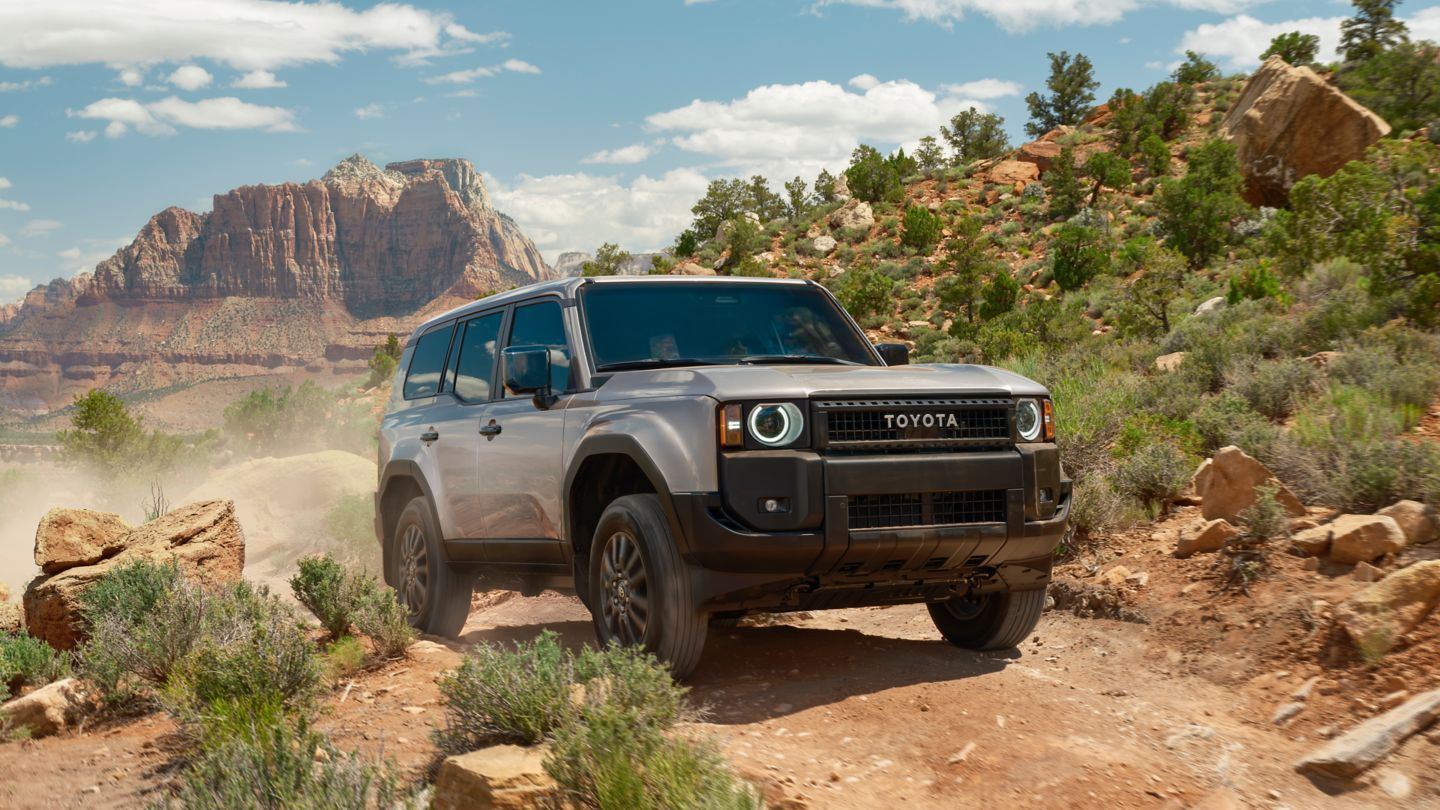
2. Toyota Land Cruiser
The Toyota Land Cruiser has long been synonymous with rugged durability and unparalleled off-road ability, and these qualities translate directly into superb winter-tire fitment and winter driving performance.
This full-size SUV features a sophisticated four-wheel-drive system that automatically adjusts torque distribution between the front and rear axles, ensuring traction is maximized on slick or snow-covered surfaces.
Unlike many SUVs that struggle to fit oversized winter tires due to tight suspension components, the Land Cruiser’s generously proportioned wheel wells and robust suspension setup provide ample room for larger winter tire packages without rubbing.
This means drivers can equip the Land Cruiser with aggressive, high-performance snow tires that deliver improved grip and braking in subzero conditions, which is critical for safety and mobility during winter.
Beyond tire fitment, the Land Cruiser’s engineering is optimized for winter survival through its advanced suspension system and ground clearance. It boasts roughly 8.9 inches of ground clearance, allowing it to easily traverse deep snow, ice-covered roads, and uneven winter terrain without the undercarriage scraping or becoming trapped.
The Land Cruiser also incorporates Toyota’s Kinetic Dynamic Suspension System (KDSS), which dynamically adjusts the suspension to improve wheel articulation and maintain tire contact with the ground — a vital feature when negotiating slippery, uneven surfaces such as packed snow or icy rocks.
This system improves the effectiveness of winter tires by ensuring they remain firmly planted, reducing wheel slip, and enhancing driver control.
In terms of comfort and technological enhancements tailored for winter, the Land Cruiser doesn’t disappoint. It comes equipped with heated seats, heated steering wheels, and multi-zone climate control to keep occupants warm during frigid weather.
The SUV also features a multi-terrain select system, which allows the driver to customize vehicle settings for specific surfaces, including snow, mud, and rock. This system optimizes throttle response, transmission shifting, and traction control to match the current driving environment, ensuring the winter tires are used to their fullest potential.
The combination of rugged capability, high-tech winter aids, and tire-friendly architecture makes the Land Cruiser one of the best SUVs for those who regularly face severe winter conditions.
The Land Cruiser’s legendary reliability also plays a key role in its winter suitability. Built to withstand the most demanding environments, it offers peace of mind to drivers who need a vehicle that won’t fail them in remote or snowy locations.
Whether outfitted with studded tires, deep tread snow tires, or a combination of winter tire innovations, the Land Cruiser’s ample clearance and advanced four-wheel drive system work synergistically to maintain traction, control, and safety even when the road conditions are at their worst.
This SUV truly exemplifies what a winter-ready vehicle should be, blending power, precision, and practicality into a package that inspires confidence when venturing out into harsh winter landscapes.
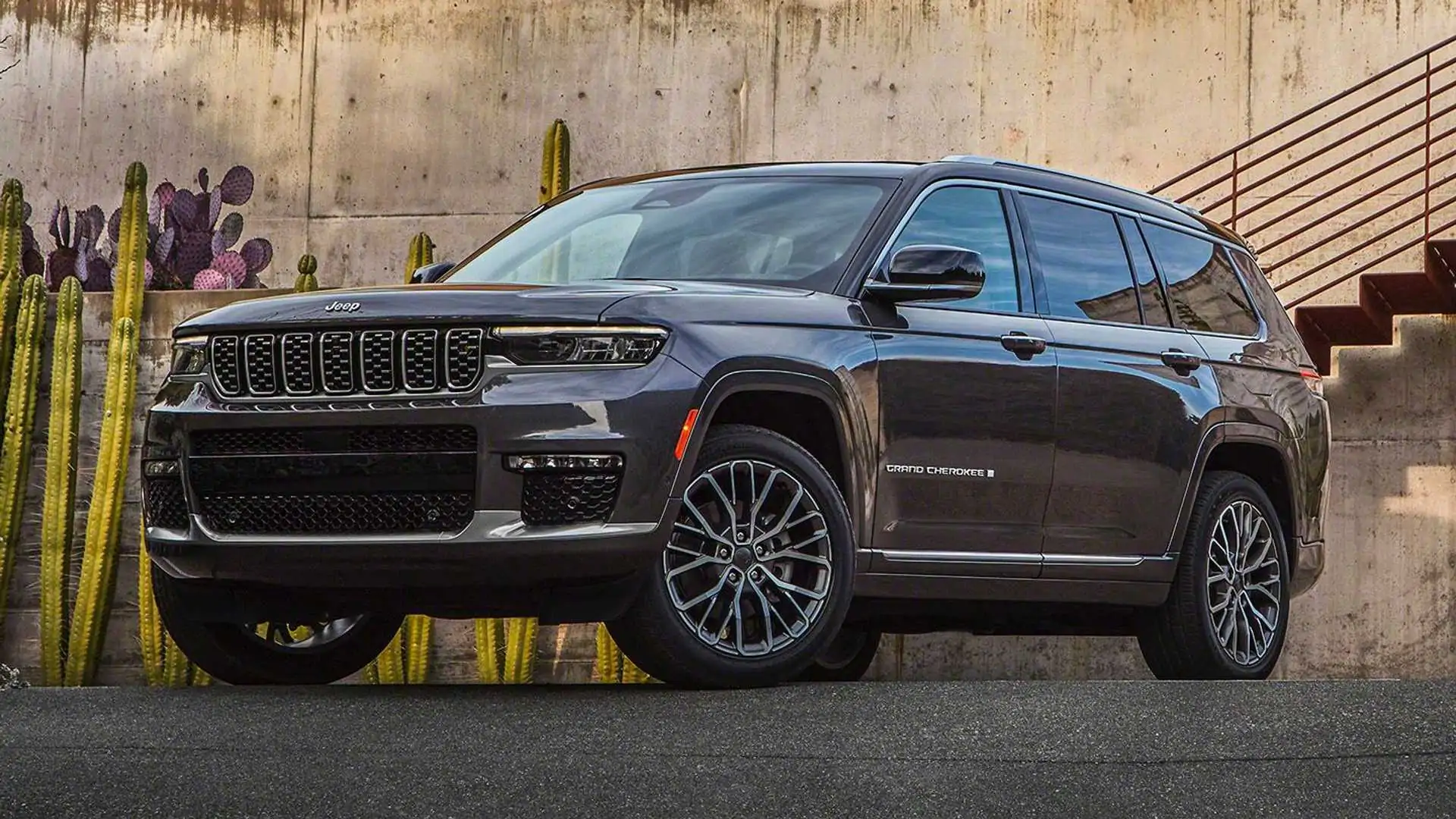
3. Jeep Grand Cherokee
The Jeep Grand Cherokee has long been heralded as a leader in off-road and winter-capable SUVs, and its design inherently supports the fitment of winter tires with minimal clearance concerns.
Central to the Grand Cherokee’s winter performance is its advanced Quadra-Drive II four-wheel-drive system, which continuously monitors traction and adjusts torque distribution to maintain grip on slippery surfaces.
This system is paired with electronic limited-slip differentials and an adaptive suspension that improves stability and comfort on snow and ice. Because of its well-engineered suspension setup and generously sized wheel wells, the Grand Cherokee can accommodate a wide range of tire sizes, including bulky, tread-heavy winter tires without compromising steering or suspension travel.
The flexibility in tire choice is a huge advantage for drivers who want maximum winter performance from their tires without risking mechanical interference or tire rubbing.
Another key benefit of the Grand Cherokee is its adaptable Selec-Terrain traction management system, which offers multiple drive modes designed to tackle various road conditions, including a dedicated Snow mode.
This system optimizes engine torque, braking, and transmission behavior to suit snowy or icy environments, helping maximize the performance of winter tires and maintain stability in slippery situations.
Additionally, the Grand Cherokee offers a respectable ground clearance of approximately 8.6 inches, providing enough space to navigate through snowbanks and uneven icy surfaces without risking damage to the undercarriage or getting stuck. This clearance also allows for the installation of larger, more aggressive winter tires that enhance grip and traction in winter conditions.
Comfort and safety technologies in the Grand Cherokee further enhance winter driving confidence. Heated front and rear seats, a heated steering wheel, and remote start capability ensure the cabin remains warm and inviting even in freezing temperatures.
The vehicle also includes advanced safety features such as forward collision warning with automatic emergency braking and blind-spot monitoring — all of which are especially valuable when visibility and traction are compromised during winter storms.
The Grand Cherokee’s balanced combination of rugged capability, generous clearance, and driver-assist technologies make it a top contender for drivers seeking an SUV that excels in snow and ice.
Lastly, the Grand Cherokee’s longstanding reputation for combining off-road toughness with luxury and comfort means it appeals to a broad range of drivers who demand reliability in winter weather without sacrificing everyday usability.
Its tire and suspension setup allow for a variety of winter tire brands and sizes to be fitted without clearance issues, making it an excellent choice for anyone wanting an SUV ready to take on icy roads and snowy trails with confidence and control.
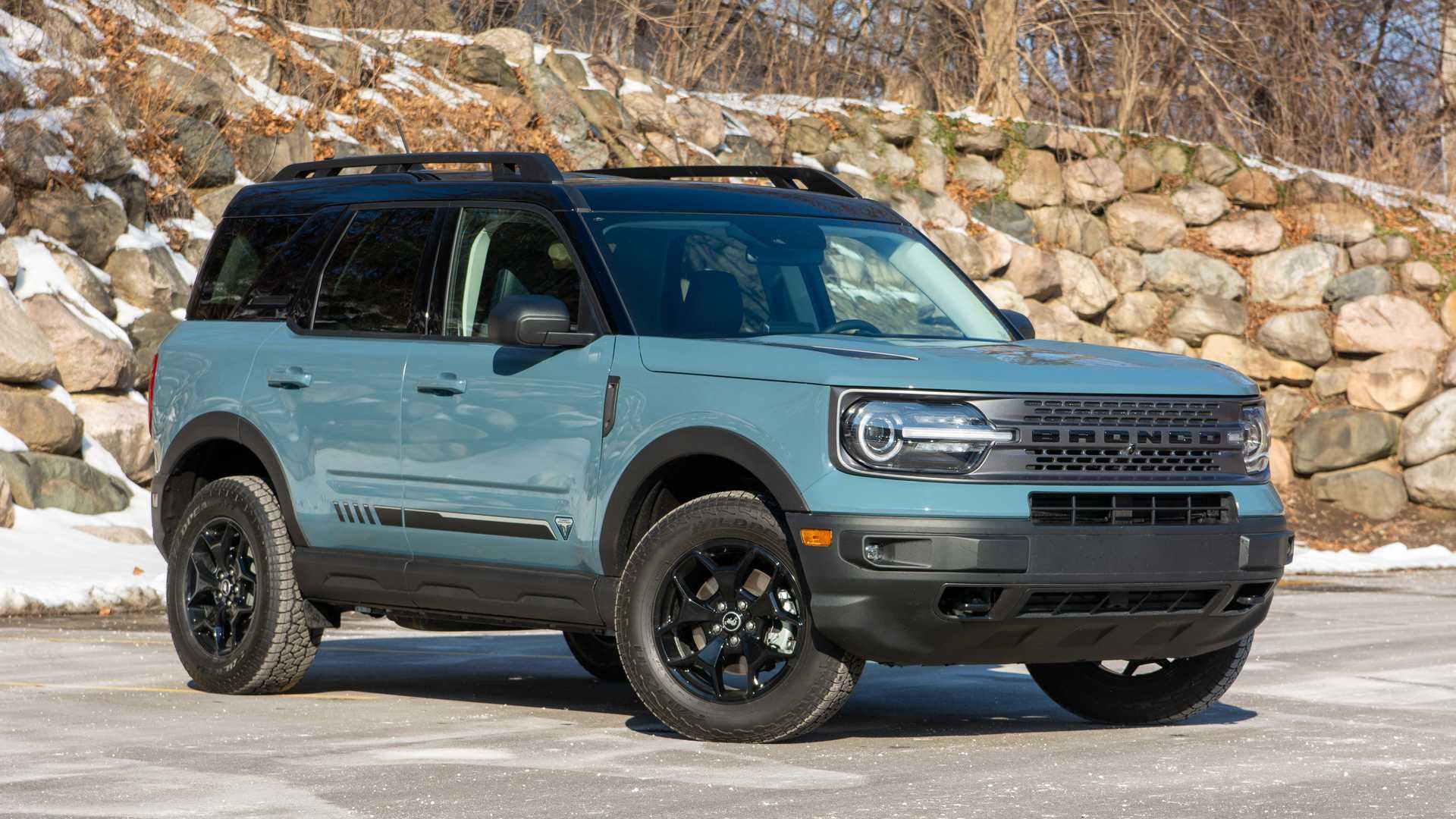
4. Ford Bronco Sport
The Ford Bronco Sport is a newcomer that has quickly gained recognition for its winter readiness, thanks in large part to its off-road-inspired design and smart engineering choices tailored for winter tire compatibility.
The Bronco Sport offers an 8.8-inch ground clearance — higher than many competitors in its segment — which provides ample space to accommodate aggressive winter tires while also ensuring the vehicle can clear deep snow and ice-covered obstacles.
This clearance advantage allows drivers to upgrade to winter tires with more aggressive tread patterns or studs without worrying about clearance issues or suspension interference. The Bronco Sport’s body-on-frame construction and rugged suspension components contribute to its ability to handle tough winter terrain and larger tires without compromising performance.
Moreover, the Bronco Sport’s available Sasquatch package enhances its winter driving capabilities significantly. This package includes all-terrain tires designed to perform well on snow, locking front and rear differentials for improved traction, and a lifted suspension that further improves ground clearance.
These features work synergistically with winter tires to optimize grip on ice and snow, providing drivers with confidence in the most demanding winter environments. The Bronco Sport also offers multiple terrain modes, including Snow/Grass/Gravel, Mud/Ruts, and Sand, which adjust throttle mapping, traction control, and braking to fit the driving conditions and enhance the effect of the winter tires.
In terms of interior comfort and technology, the Bronco Sport supports winter driving with heated seats, heated steering wheel options, and advanced driver-assistance systems such as hill descent control and trail control, which help maintain control during steep or slippery descents.
The vehicle’s smart design incorporates easily removable rubber floor mats and durable trim that handle winter slush and mud, making it a practical choice for harsh climates. The Bronco Sport’s balance of rugged capability, clearance for winter tires, and driver-focused features make it an excellent SUV for those looking to navigate winter roads safely.
Finally, the Bronco Sport’s modern engineering emphasizes versatility. It fits larger winter tires without sacrificing ride comfort or handling dynamics, an uncommon trait in its class. This capability makes the Bronco Sport a standout choice for drivers who want the ruggedness of a traditional off-roader combined with the modern conveniences and tire fitment flexibility necessary for harsh winter climates.
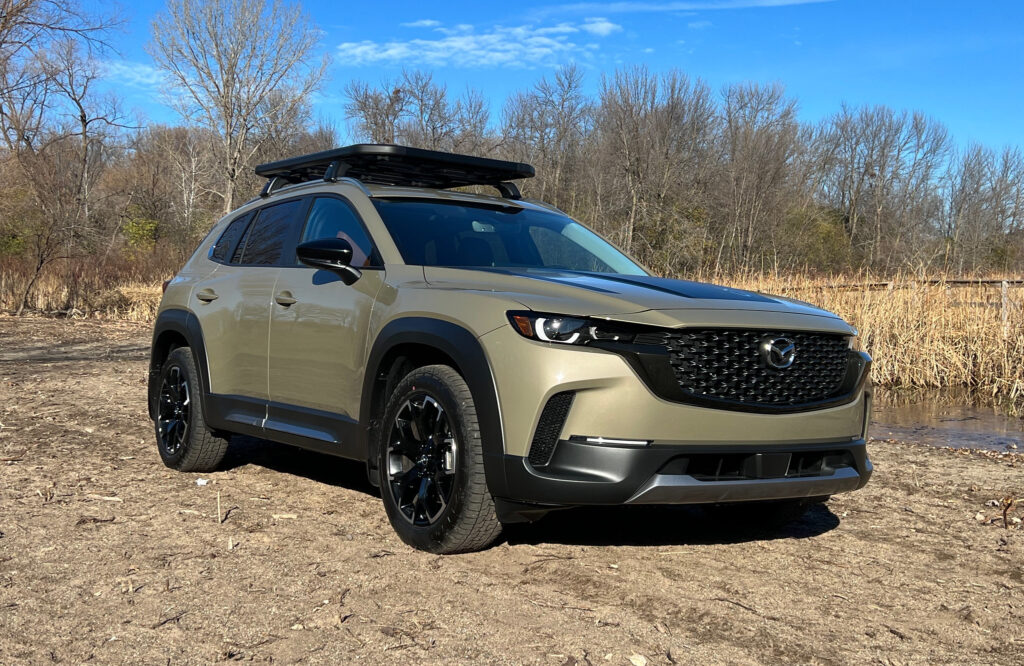
5. Mazda CX-50 Meridian Edition
The Mazda CX-50 Meridian Edition is Mazda’s answer to drivers looking for an SUV that combines style, all-weather capability, and tire fitment flexibility. Although Mazda vehicles are often praised for their sporty driving dynamics, the CX-50 Meridian Edition takes this a step further by embracing ruggedness suitable for winter conditions.
One of the standout features of this model is its compatibility with the Falken Wildpeak A/T Trail snow-rated tires — an aggressive all-terrain tire option built specifically for winter driving.
Unlike many crossover SUVs, the CX-50’s wheel well and suspension design allow for these larger, more capable winter tires to be installed without clearance issues, providing better traction and durability on snow and ice.
The CX-50 offers about 8.9 inches of ground clearance, which is on par with some of the best in its class and crucial for negotiating deep snow or icy, uneven roads. This clearance not only protects the vehicle’s underbody but also ensures that winter tires with deeper treads and more robust sidewalls can function without interference.
Additionally, the CX-50 incorporates Mazda’s i-Activ all-wheel-drive system, which uses predictive technology to monitor road conditions and optimize torque distribution. This synergy between AWD and winter tires creates a responsive, confident driving experience, reducing the likelihood of slip and improving control in low-traction conditions.
Mazda also equips the CX-50 Meridian Edition with driver aids and comfort features that benefit winter drivers, including heated seats, a heated steering wheel, and an advanced climate control system designed to rapidly clear fog and frost from windows.
While it does not have a dedicated Snow mode, the Trail mode is designed to handle all weather conditions, adjusting throttle and traction control to maximize tire grip on slippery surfaces. The CX-50’s balanced handling, responsive steering, and strong braking capabilities also help winter tires perform at their peak, providing drivers with precise control when it matters most.
The CX-50 Meridian Edition stands out by marrying Mazda’s signature driving pleasure with practical winter-ready enhancements.
Its ability to fit specialized winter tires without clearance concerns, combined with its competent AWD system and above-average ground clearance, makes it an excellent choice for those who want a vehicle that looks sleek but can also tackle winter weather confidently. For drivers who want a crossover that doesn’t compromise on style or winter capability, the CX-50 Meridian Edition is a compelling option.
5 SUVs with Clearance Issues for Winter Tire Fitment
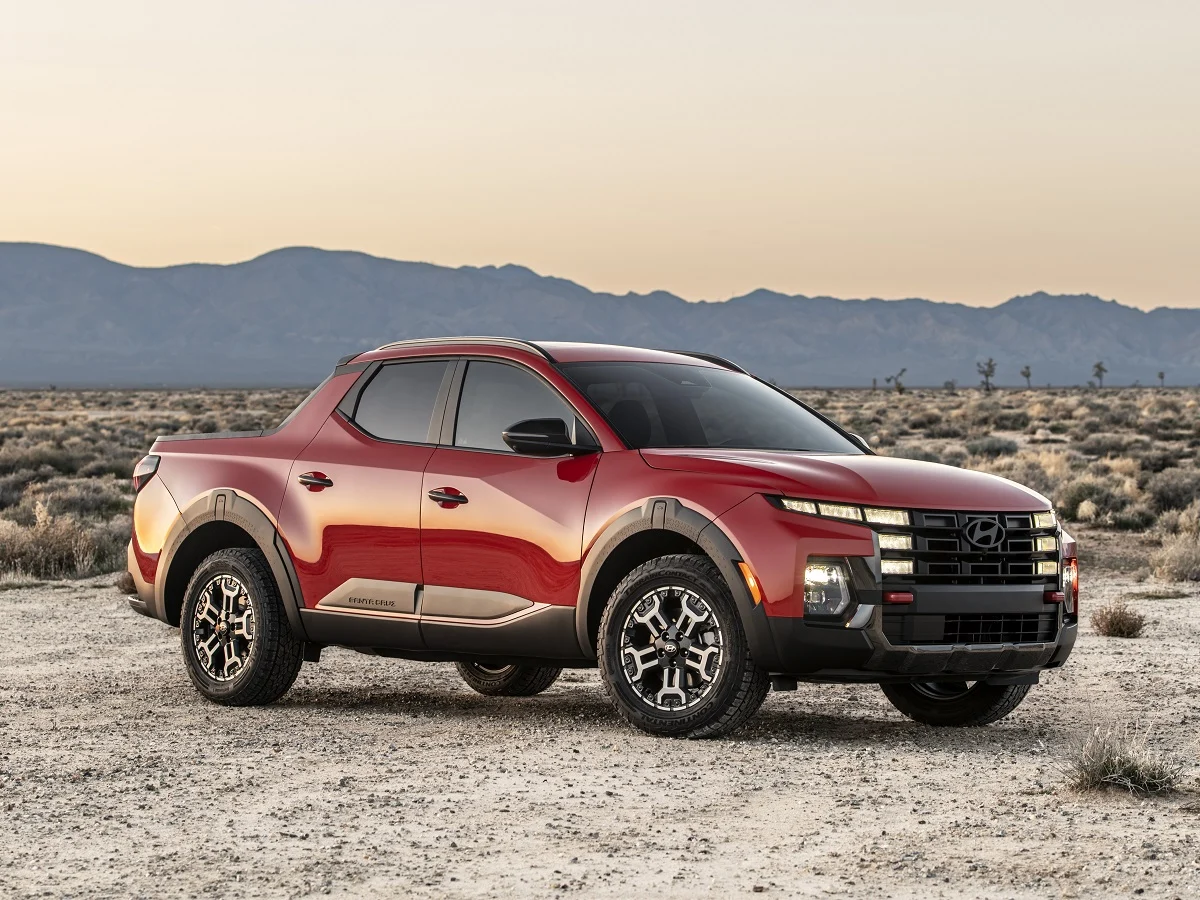
1. Hyundai Santa Cruz
The Hyundai Santa Cruz is a unique vehicle that blurs the line between SUV and pickup truck, offering a versatile design that appeals to many buyers. However, when it comes to winter tire fitment, the Santa Cruz presents some challenges primarily due to its suspension setup and wheel well clearance.
While the truck bed can be loaded with sandbags or gear to improve traction in snow, the lack of substantial clearance around the tires can limit the size and tread aggressiveness of winter tires that can be safely installed. This can be a significant limitation for drivers seeking optimal winter performance, as larger, more capable tires are often necessary for deep snow and icy conditions.
Another factor affecting the Santa Cruz’s winter tire compatibility is its relatively narrow tire width options. Many base and mid-level trims come equipped with tires that are not particularly wide or aggressive, and upgrading to wider winter tires risks rubbing against the fender liners or suspension components.
Without sufficient clearance, the tires can cause premature wear or mechanical interference, which may lead to costly repairs or diminished handling performance. Furthermore, the Santa Cruz’s front-wheel-drive setup on some trims, while adequate for light snow, is less effective in severe winter conditions, making winter tires even more critical for safety and control.
Ground clearance also poses a challenge for the Santa Cruz in winter scenarios. While it offers around 8.0 inches of clearance—respectable for a crossover—it’s still on the lower end compared to dedicated winter-ready SUVs.
This means navigating deep snow or unplowed roads can cause the undercarriage to scrape, potentially damaging vital components like brake lines, exhaust systems, or fuel tanks.
The relatively lower clearance also increases the chance of becoming stuck in heavy snow, which can be a frustrating and dangerous situation, especially in remote or poorly maintained areas during winter months.
Finally, while the Santa Cruz is equipped with driving aids like a traction control system and selectable drive modes, including Snow, these electronic helpers cannot fully compensate for physical limitations in tire fitment and clearance.
Owners who live in regions with heavy snowfall or icy roads often find that the Santa Cruz requires significant tire compromises or additional aftermarket modifications, such as wheel spacers or smaller diameter wheels, to safely accommodate winter tires.
These solutions may affect ride quality, warranty, or overall vehicle dynamics. Thus, while versatile and fun to drive, the Santa Cruz has clear limitations when outfitted for serious winter driving.
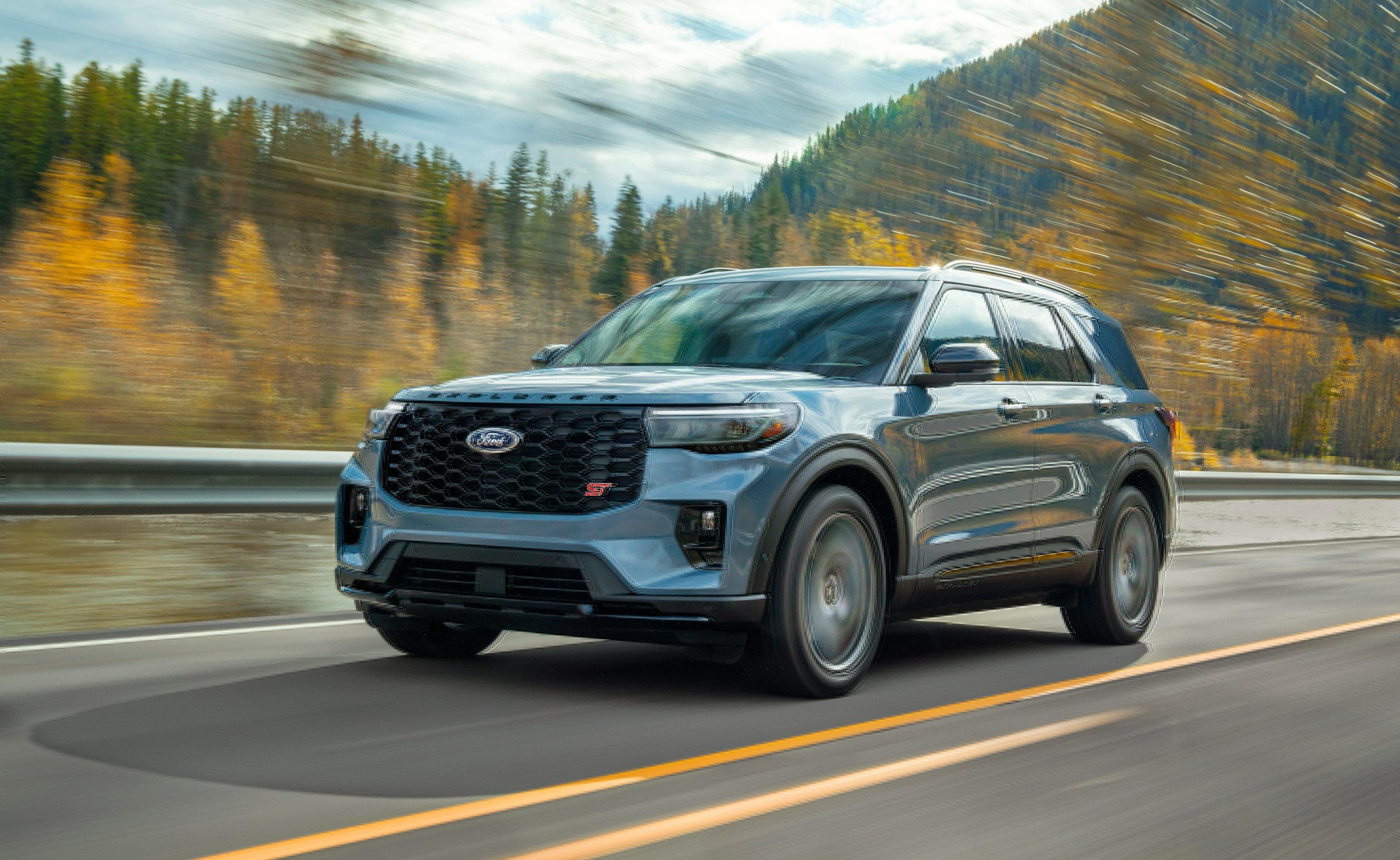
2. Ford Explorer
The Ford Explorer is a popular midsize SUV offering a comfortable interior and a suite of technology features, but it’s often criticized for limitations related to winter tire fitment and ground clearance.
The Explorer’s suspension and wheel well design create a tighter fit around the tires, especially when moving from standard all-season tires to bulkier winter tires with deeper tread or studded designs.
This restriction can lead to tire rubbing during turns or suspension compression, which not only wears down tires prematurely but can also cause damage to suspension components or fender liners if not addressed. For drivers in snow-prone areas, this presents a significant compromise in safety, as selecting the optimal winter tire size becomes constrained by clearance.
In addition to clearance challenges, the Explorer’s ground clearance — roughly 8.2 inches — while adequate for moderate snow, can be insufficient for regions with heavy or deep snowfall. This can increase the risk of scraping the undercarriage on snowdrifts or unplowed roads, potentially damaging underbody components or leaving the vehicle vulnerable to getting stuck.
Although the Explorer features a Terrain Management System with specific modes for snow and slippery surfaces, these electronic aids can only do so much when physical clearance is limited and the tires are not ideally matched to the conditions.
Another important factor is the Explorer’s relatively narrow range of factory-approved tire sizes. While it can technically fit winter tires, the window for increasing tire width or tread depth is limited compared to more winter-focused SUVs.
Many drivers find themselves stuck between choosing tires that fit safely but may lack optimal winter traction, or more aggressive winter tires that improve grip but risk mechanical interference.
This compromises the vehicle’s ability to perform at its best in snowy and icy conditions and may necessitate aftermarket wheel and tire modifications to create sufficient clearance, a solution that can be costly and complex.
Lastly, the Explorer’s weight and powertrain dynamics also influence its winter performance, but these cannot fully make up for the clearance and tire size constraints. Some trims come with rear-wheel drive or all-wheel drive, and while these systems improve traction, the inability to fit larger, more capable winter tires can diminish overall performance on ice and snow.
Drivers must therefore weigh the Explorer’s comfort and technology features against its less-than-ideal tire fitment capacity and clearance, which could be critical factors when considering the vehicle for harsh winter environments.
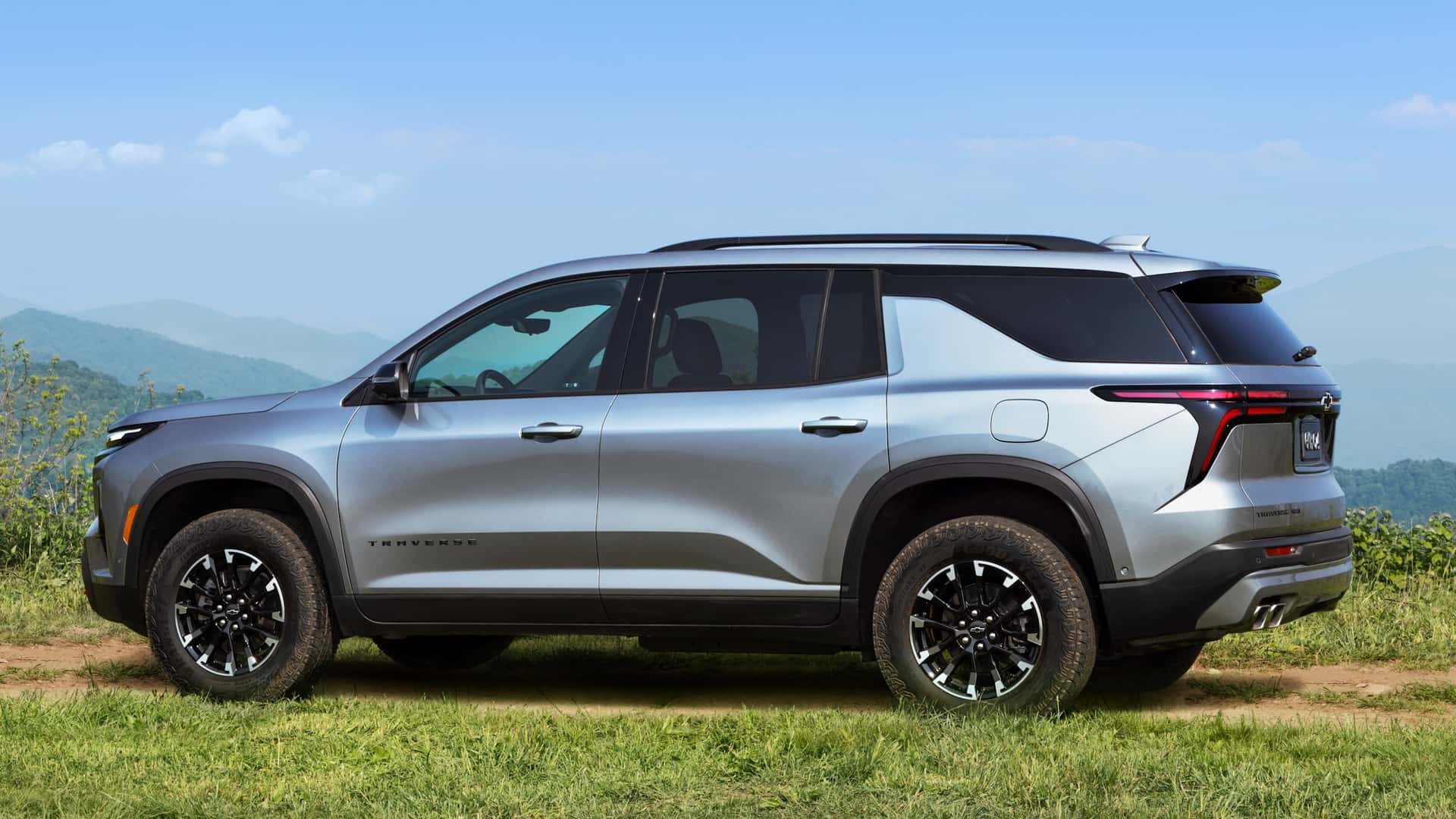
3. Chevrolet Traverse
The Chevrolet Traverse is known for its spacious interior and family-friendly features but has notable drawbacks when it comes to winter tire fitment and ground clearance for winter driving. One of the primary concerns is the Traverse’s relatively low ground clearance of around 7.2 inches, which is less than many competitors in its class.
This limited clearance can be problematic in deep snow, as the vehicle’s underbody components risk catching on snowbanks or icy road debris, increasing the potential for damage or getting stuck. Furthermore, the Traverse’s lower clearance restricts the size and tread aggressiveness of winter tires that can be installed without rubbing against the wheel wells or suspension parts.
Another factor is the Traverse’s factory tire specifications and wheel well dimensions, which tend to favor standard all-season tires with moderate tread depth. When upgrading to winter tires that are wider or have deeper lugs and siping, clearance issues often arise.
This is particularly important for drivers who rely on studded tires or tires with reinforced sidewalls for added durability and grip during harsh winters. The Traverse’s suspension geometry does not accommodate these larger winter tires easily, which may cause interference during suspension travel or tight cornering, leading to uncomfortable noises, reduced tire life, or mechanical wear.
Additionally, the Traverse’s standard front-wheel-drive setup on many trims can exacerbate winter traction challenges, especially when paired with tires that do not maximize snow and ice grip due to clearance limitations. While all-wheel drive is available, it’s the combination of tire fitment and ground clearance that truly dictates winter readiness.
The Traverse’s constraints in these areas mean that drivers often have to settle for compromises in tire selection or invest in costly aftermarket modifications such as wheel spacers or smaller diameter wheels to fit better winter tires. These modifications can sometimes affect handling or even void warranty coverage, adding to the drawbacks.
Lastly, despite its family-friendly interior and technology features like adaptive cruise control and lane-keep assist, the Traverse falls short as a dedicated winter vehicle due to its physical limitations. In regions with heavy snowfall or icy conditions, drivers may find themselves struggling with limited tire options and insufficient clearance, leading to less confident winter driving.
These factors must be carefully considered by anyone thinking of using the Traverse as their primary winter vehicle, especially if serious winter tire upgrades are a priority.
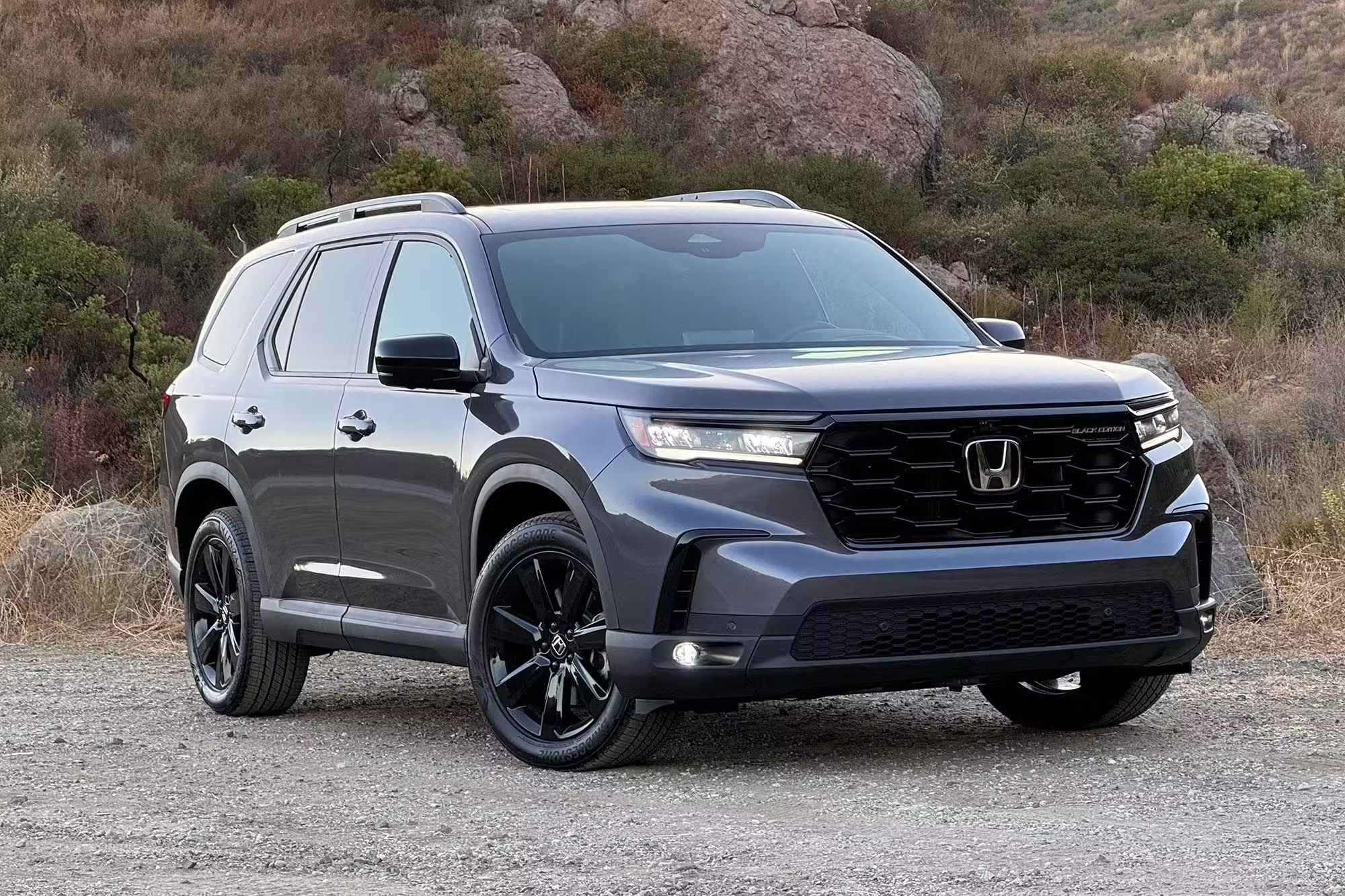
4. Honda Pilot
The Honda Pilot is a midsize SUV favored for its smooth ride, spacious interior, and reliability, but it faces challenges related to winter tire fitment and ground clearance that can impact winter driving performance. With a ground clearance of approximately 7.3 inches, the Pilot sits lower than many other SUVs designed with winter conditions in mind.
This reduced clearance can make it difficult to navigate deep snow or uneven icy terrain without risking undercarriage damage or becoming stuck.
Additionally, the Pilot’s suspension and wheel well dimensions limit the size and tread aggressiveness of winter tires that can be installed without risking tire rub or suspension interference, which can reduce the effectiveness of winter tires in severe conditions.
The Pilot’s factory tire specifications further constrain winter tire options. The vehicle typically comes with all-season tires designed for comfort and longevity rather than deep snow traction.
When upgrading to winter tires, drivers often encounter difficulties fitting wider or more aggressive tires within the stock wheel wells without rubbing on suspension components or fender liners during turns or when the suspension compresses.
This physical limitation means that owners must either choose smaller or less capable winter tires, compromising safety and performance, or seek aftermarket modifications that may affect warranty and ride quality.
Another important consideration is the Pilot’s all-wheel-drive system, which while competent, depends heavily on the effectiveness of the tires for traction in snow and ice. Limited tire fitment options reduce the overall capability of this system in harsh winter conditions, as tires play a crucial role in grip and braking performance.
Despite available driver-assist technologies like stability control and traction control, these systems cannot fully overcome the drawbacks of insufficient clearance and limited tire compatibility when faced with deep snow or icy roads.
Finally, although the Honda Pilot excels in comfort, interior space, and fuel efficiency, its physical limitations regarding tire fitment and ground clearance may make it less suitable for drivers who face serious winter weather regularly.
For families living in snowy regions, these factors could translate into less confidence on the road and potential difficulties during winter trips. Drivers prioritizing winter performance might need to consider vehicles with higher clearance and more generous tire fitment allowances to ensure maximum safety and capability.
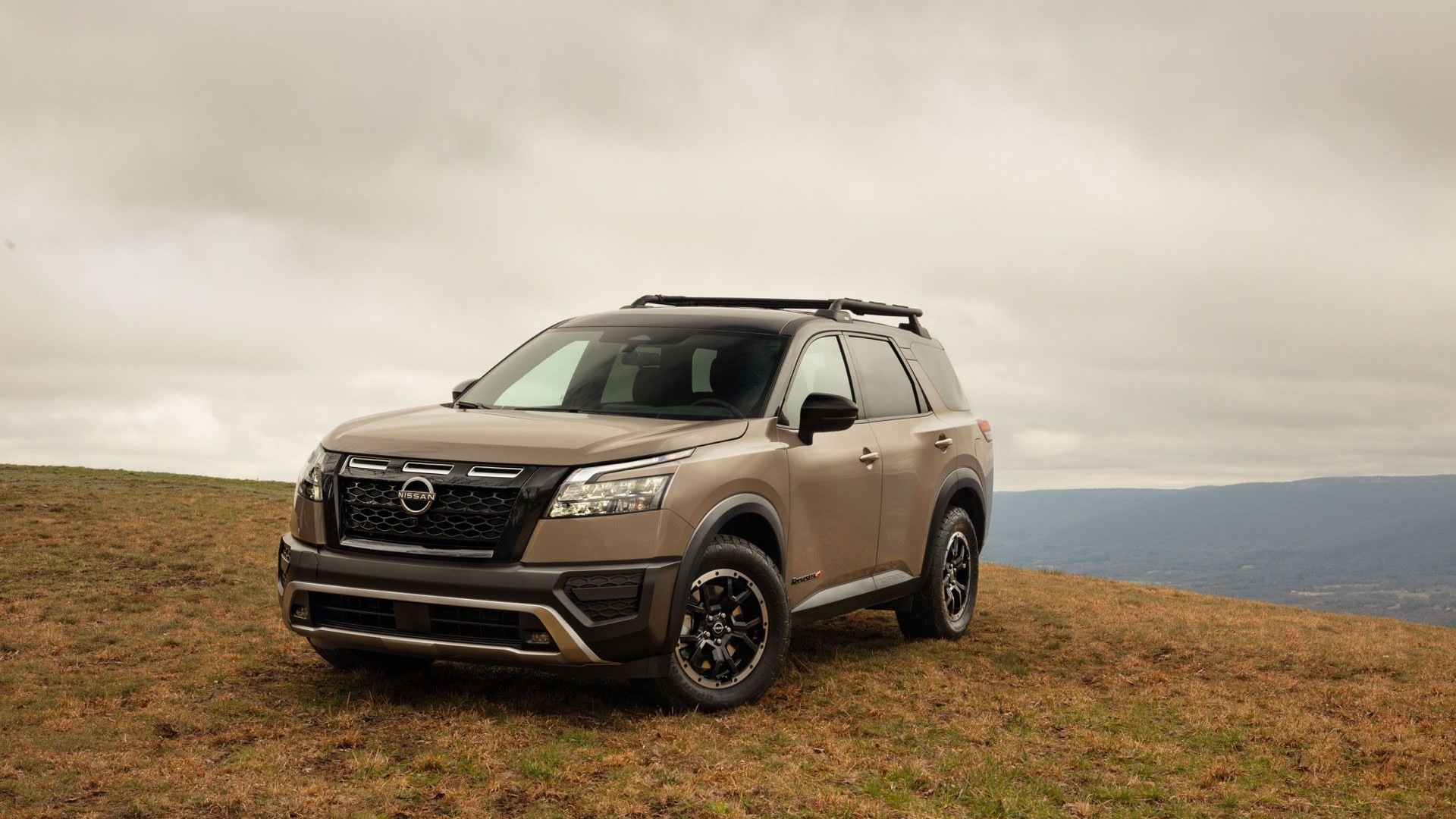
5. Nissan Pathfinder
The Nissan Pathfinder is a midsize SUV offering a comfortable ride and modern technology, but it encounters challenges in the realm of winter tire fitment and ground clearance that could hamper its winter driving capability. The Pathfinder’s ground clearance is approximately 7.1 inches, which is relatively low compared to other SUVs known for winter prowess.
This limited clearance restricts the vehicle’s ability to traverse deep snow and uneven icy surfaces without the risk of scraping or damage to critical underbody components such as the exhaust, brake lines, or fuel tank.
The low clearance also limits the range of winter tire sizes that can be installed, particularly those with aggressive tread patterns or larger diameters, which are essential for maintaining traction on snow and ice.
Wheel well clearance is another concern for the Pathfinder when fitting winter tires. The factory wheel wells and suspension geometry are designed to accommodate moderate tire sizes, but when upgrading to winter tires with deeper tread or studded options, rubbing against fender liners or suspension parts can occur.
This can lead to premature tire wear, suspension damage, or compromised steering response, particularly during tight turns or when the suspension is under load.
Drivers seeking to maximize winter tire performance may find themselves restricted by these physical dimensions, forcing compromises on tire choice or requiring aftermarket modifications such as wheel spacers or smaller diameter wheels, which may impact warranty or vehicle handling.
The Pathfinder’s 4WD system and Terrain Mode selector provide some assistance in snow and slippery conditions, but these electronic aids cannot compensate for physical limitations posed by tire and clearance issues.
While the Pathfinder offers modern safety features like traction and stability control, the effectiveness of these systems depends heavily on the tires’ grip and fitment. Limited tire options and low clearance mean the vehicle may struggle more than competitors when faced with deep snow or icy roads, potentially compromising safety and performance.
Finally, the Nissan Pathfinder’s family-oriented design focuses heavily on comfort and interior technology, which while valuable, may not satisfy drivers needing robust winter capability. For those who prioritize reliable winter driving performance, especially in regions with heavy snowfall, the Pathfinder’s tire fitment and clearance constraints could be significant drawbacks.
Prospective buyers should carefully weigh these factors and consider whether the vehicle meets their winter driving needs or if alternative SUVs with better tire compatibility and clearance would be more appropriate.
Also Read: Top 10 Most Reliable Used Cars You Can Buy for Under $10,000 in 2025
Navigating winter driving conditions requires more than just skill and caution—it demands a vehicle that is physically and mechanically equipped to handle snow, ice, and freezing temperatures. One of the most impactful factors influencing winter performance is the ability to fit appropriate winter tires without clearance issues or the risk of mechanical interference.
Throughout this article, we have examined the stark contrasts between SUVs that excel in accommodating winter tires and those that struggle with clearance problems, highlighting how vehicle design can dramatically affect safety and performance in winter environments.
The SUVs rated best for winter tire fitment are exemplary because they combine generous ground clearance, thoughtful suspension geometry, and spacious wheel wells with advanced all-wheel-drive or four-wheel-drive systems. These features create a harmonious environment that allows drivers to equip their vehicles with larger, more aggressive winter tires, which in turn deliver superior traction, control, and braking on snow and ice.
Vehicles like the Subaru Outback and Toyota Land Cruiser stand out not only for their mechanical compatibility but also for their overall winter-oriented design, including heated elements and traction management systems that enhance confidence and comfort in harsh conditions.
This synergy between tire fitment and vehicle capability underscores the importance of considering tire clearance as part of the broader winter readiness picture.
On the other hand, SUVs facing clearance issues for winter tire fitment reveal a different set of challenges. Models such as the Hyundai Santa Cruz and Chevrolet Traverse demonstrate that even popular and versatile SUVs may have physical limitations that restrict the effective use of winter tires.
These limitations can force compromises—such as fitting smaller or less capable tires—that ultimately reduce winter performance and safety. Moreover, attempts to overcome these issues through aftermarket modifications may introduce new problems, including altered handling characteristics, increased wear, or warranty concerns.
For drivers living in areas prone to heavy snowfall and icy roads, these clearance issues are more than just inconveniences—they are potential safety risks that warrant careful consideration.
The contrast between these two groups of SUVs highlights an important takeaway for consumers and winter driving enthusiasts: the best winter vehicle is not necessarily the one with the most horsepower or flashiest features but the one that integrates practical winter driving considerations into its design.
Tire fitment, clearance, and suspension geometry are fundamental factors that can mean the difference between a safe, controlled drive and a risky, unstable journey on slippery roads. When selecting or upgrading an SUV for winter use, these physical compatibility factors should be as high on the priority list as powertrain specifications or interior amenities.
Additionally, the importance of winter tires themselves cannot be overstated. Regardless of how capable a vehicle is, winter tires are the single most effective upgrade to improve traction, shorten stopping distances, and reduce the likelihood of accidents in winter conditions.
Vehicles that accommodate winter tires well amplify these benefits, allowing drivers to take full advantage of tire technology without worry. Conversely, vehicles with clearance issues limit these benefits and require careful attention to tire size and fitment to avoid mechanical problems.
In summary, the decision to invest in an SUV for winter driving should be guided by a comprehensive understanding of how well the vehicle supports winter tire fitment and the practical realities of winter road conditions.
The five SUVs rated best for winter tire fitment offer peace of mind through their design and features, while the five with clearance issues serve as cautionary examples of the compromises and challenges that can arise.
By carefully weighing these factors, drivers can choose a vehicle that truly meets their winter needs, ensuring safer, more confident driving during the coldest and most challenging months of the year.
Ultimately, winter safety is a holistic endeavor—requiring the right vehicle, the right tires, and the right mindset. Choosing an SUV with good winter tire fitment capability is a crucial step on that path, one that will pay dividends in reliability, control, and peace of mind every winter season.
